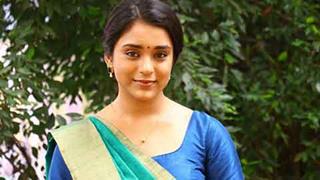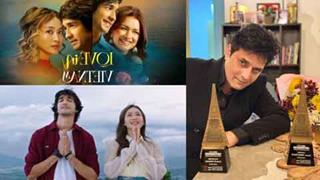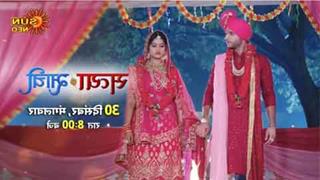Move over Akshay Kumar, John Abraham and every other macho movie star. Here come Kay Kay Menon, Irfaan Khan, Ranvir Sheorey and co -- the thinking woman's celluloid companions.
When it comes to male matinee idols, movie audiences -- comprising more women than men, say stats -- have been very demanding over the decades. The camera's chase of the Brand Hero yields an unusual assortment but none as effervescent and enigmatic as the current crop --stars sans starry airs like Rahul Bose, Boman Irani, Pankaj Kapur, Shiney Ahuja, Arshad Warsi, Kunal Kapoor and Kunal Khemu.
The soulful face of the '60s -- Dilip Kumar, Biswajeet and Bharat Bhushan -- gave way to the angry young man -- Amitabh, Amitabh and Amitabh Bachchan. Poetry was replaced by rippling muscles and departures led to duds like "Silsila" and "Utsav".
The late '70s saw different types of faces playing hero, comedian or villain. Pran and Prem Chopra, who had interesting potential, were limited to going ha-ha while hatching evil plots in vague but nefarious locations. This was before Shah Rukh Khan toppled Shilpa Shetty over a terrace and stuck around to justify why.
With the leading man performing his own daredevil stunts, jokes and creepy stuff, Keshto Mukherjees, Om Prakashes, Premnaths and A.K. Hangals were suddenly out of business. Amitabh's Sexy Sam in " Kabhi Alvida Na Kehna" made old age jazzy while "Jaan-e-Man" made a hero out of a loser, played by Salman Khan.
Suddenly there was the Khan troika -- Aamir, Shah Rukh and Salman -- who cut down to size the macho man who towered protectively over his leading lady. The hero even began to wear an earring, stubble and a leer, be it an unconvincing Cyrus or a horribly hobbling Langda Tyagi.
Unconventional types came tumbling out of the closet -- Parvin Dabbas, Shreyas Talpade and Atul Kulkarni. From the lean pickings of a bygone era -- Naseeruddin Shah and Om Puri -- there is now a rich repast of leading men with irregular features.
When Kay Kay Menon dances with such abandon in "Sajna di vari-vari jaaoon mein" ("Honeymoon Travels") -- a la Manoj Bajpai in "Sapnon mein milti hai" ("Satya") -- he dislodges stereotypes with one wild shake of his hips. There is no greasepaint, no self-consciously rehearsed step, no cute camera angles and yet he is a delight to watch with his avant-garde antics.
The gap between fantasy and facts grows thinner as the jhatkas and matkas are usurped by ordinary looking people who could easily be members of the audience. Only a Krrish, whose superhuman capabilities have a celluloid history, is pardoned for his leaps from building to bus.
The rest charm by playing ordinary people caught up in everyday turmoil, be it an Anupam Kher in "Khosla Ka Ghosla" or a Viveik Oberoi in "Omkara".
The blurring of lines between supermen and normal, pain-ridden protagonists began admittedly with a Spiderman from the west, but it was carried forward by an AIDS-ridden Salman in "Phir Milenge" and a porn-fighting Kunal Khemu in "Kalyug".
With Shah Rukh playing a ghost (and triumphing as a lover over the real husband) in "Paheli" and Irfaan Khan succumbing to his ghosts in "Maqbool", the real-time hero has truly arrived.
The coup staged by "Rang De Basanti" owed more to its generation of reassuringly normal characters -- like Atul Kulkarni and Kunal Kapoor -- than Aamir's star power alone.
Sensitive male portrayals that were neither sexist nor ageist -- like Amitabh's in "Black" and "Nishabd" or Shiney's in "Hazaaron Khwaishein Aisi" -- stayed in audience minds more than mindless fare like "Golmaal" and "Bluffmaster" where boy-bonding in funky settings failed to strike a chord.
Even when it comes to eye candy, popcorn eaters will stop chewing only for someone of Hrithik Roshan's hunky calibre in "Dhoom 2". In his pirate patches, long tresses and pink shirt, he is one dude who can put any Hollywood hero to shame in the body department.
As for the latest Bollywood hottie, don't look now, he's changing.
Move over Bollywood Hunks...
Monday, March 05, 2007 12:56 IST


















